Do palmetto and palm trees look the same to you? These two species of trees have so many similarities that it can be hard to tell them apart at first glance, especially since they are both tropical plants with long foliage. However, if you take a closer look, there are several distinct differences in terms of their appearance and habitats.
In this blog post, we will explore the various distinguishing features between palmetto and palm trees – so whether you’re looking for a unique tree for your backyard or just curious about these plants in general, you’ll find everything you need to know right here!
What’s a Palm Tree?
A palm tree is a type of tree that has long, slender stems and large, fan-like leaves at the top. It is usually associated with tropical and subtropical climates, but can also be found in some temperate areas. Palm trees are often used for landscaping and shade due to their ornamental appearance and ability to provide shelter from the hot sun.
From providing food and housing materials to medicinal uses – there are many things that make the humble palm tree so special! [1]If you’re looking to add some extra beauty or ambiance to your yard or garden, then consider planting a palm tree. They are relatively easy to care for and will add an element of tropical charm to your outdoor space. With so many varieties available, you can find the perfect one that fits into the look and feel of your home.
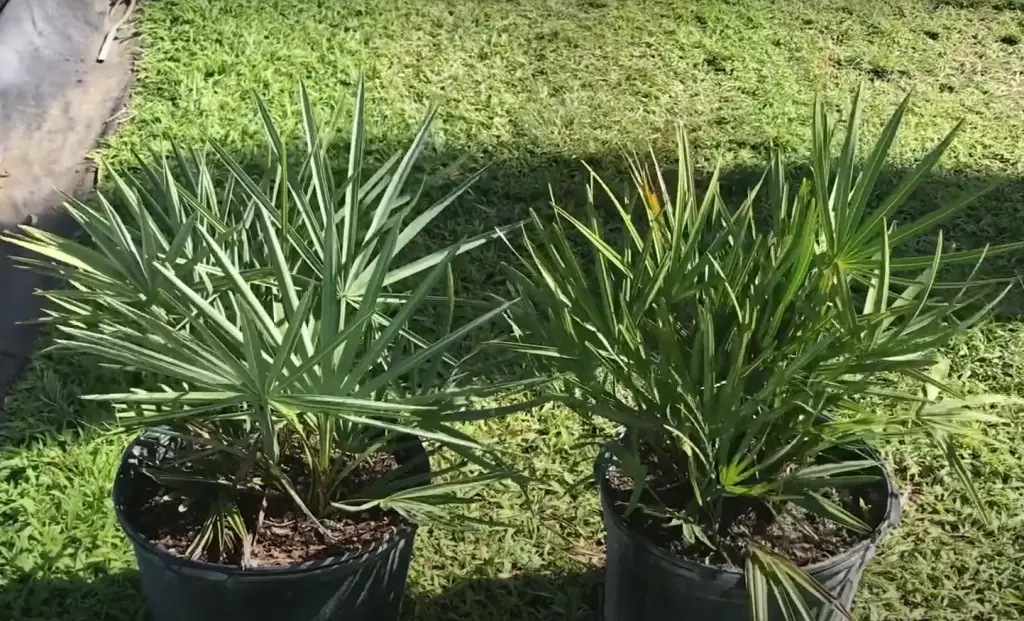
So why not try out a palm tree today? You’ll be sure to enjoy its unique beauty and versatility – from providing shade to adding some extra color around your garden! Plus, you may even discover some great uses for it you never knew about before. So go ahead – give it a try! You won’t regret it. [2]
What is a Palmetto Tree?
A palmetto tree is a type of fan palm tree, native to many subtropical and tropical regions in the United States. It has been used for centuries as a source of food, fiber, and shelter by Native Americans. The evergreen leaves of the palmetto tree are palmate (fan-shaped), with about 5-20 leaflets radiating from a central point. [3]
The trunk of an adult tree is typically short, stubby, and sometimes swollen at the base. Its unique trunks make it resistant to strong winds and hurricanes. These trees can reach up to 20 feet tall when fully mature. They are also popularly known for their use as symbols on state flags and seals across various southern states.
They are generally easy to propagate by cutting off the basal suckers, or simply planting seeds from the berries of the tree.These trees can grow in a variety of soil types, but they prefer sandy and well-drained soil with adequate moisture levels. They also need plenty of sunlight to thrive and should be protected from strong winds. With proper care, palmetto can provide beautiful and functional shade for many years! [4]
Key Characteristics Of The Palmetto Tree
- The Palmetto tree is an evergreen, small to medium-sized palm that has a distinctive fan-shaped crown of leaves.
- Palmetto trees can grow up to 40 feet tall and 15 feet wide with trunks reaching up to two feet in diameter.
- Its fronds are stiffly upright and typically consist of a single row of leaflets arranged in V shapes around the stem.
- The trunk is usually slender and covered with smooth marks left by old leaf bases called petiole scars. It is often swollen at the base and may have several offshoots near the ground level called suckers or shoots.
- The Palmetto tree has a yellow-green hue to its foliage and can be either single or multi-trunked.
- It is also very drought tolerant and can tolerate high winds, making it an ideal choice for windbreaks and low maintenance landscaping.
- Palmetto trees are native to the southeastern United States, where they are often found in swamps, marshes, wetlands, dunes, or sandy soils.
- The Palmetto tree is valued as ornamental plants due to their beautiful leaves and attractive form. They are often used in landscapes as specimen plants or incorporated into hedges and screens for privacy or windbreaks.
- Palmetto trees produce fruits that are edible for humans and wildlife. The fruit is a small, yellow-orange drupe that looks like a cross between an olive and a plum.
- Palmetto trees can be used as traditional medicines among Native Americans due to the presence of phytochemicals such as flavonoids, terpenes, phenolics, tannins and other active compounds found in its leaves and fruits. These compounds have been known to possess anti-inflammatory and antioxidant properties.
- Palmetto trees are also host plants for the endangered Schaus’ Swallowtail butterfly species. The caterpillars feed on the foliage of these trees, making them an important part of the ecosystem in their native habitats. [5]
Key Characteristics Of The Palm Tree
- Most palm trees have a single, unbranched trunk and are characterized by their leaves which are typically fan-shaped or feather-shaped. Some palms can reach heights of up to 200 feet (60 meters).
- Palms are generally light feeders and don’t require much fertilizer. They prefer soils that are slightly acidic to neutral in pH range (6.5 – 7.5).
- Because most palms come from tropical locations, they’re not cold hardy and will die off if temperatures drop below freezing level for more than two days at a time. Even those palms that are considered “cold tolerant” can’t withstand temperatures below 20°F (-7°C).
- Palms prefer a moist environment and typically require regular watering, especially in periods of extreme heat and drought.
- Most palms need full sun to partial shade for optimal growth; some varieties such as the Pygmy Date Palm may even cope with deep shade conditions.
- Palms do best in an area with good air circulation and minimal air pollution, so they should be planted away from busy roads or any other sources of air pollutants.
- Palms are not picky when it comes to soil type, but they perform best in well-draining, sandy loam soil.
- Palms don’t require much pruning. However, if necessary, it should be done with sharp sterilized shears or knives to prevent any fungal diseases or pests from entering the plant.
- Palms can be propagated by seed, division of suckers or offshoots, and tissue culture for some varieties.
- Palms are susceptible to a range of pests and diseases such as scale insects, spider mites, nematodes, Phytophthora root rot, leaf spot disease and Fusarium wilt. Proper maintenance is essential in order to keep them healthy.
- They are popular in the landscape due to their graceful form and low maintenance needs. They can be used as a single focal point or planted in groups to create a lush tropical effect. They also work well as potted plants and indoors as houseplants.
- The life span of palms varies greatly depending on species, but generally they can live for several decades with proper care. Some species may even live up to 100 years or more in ideal conditions!
- In addition to being used for landscaping purposes, palm trees have a variety of other uses such as providing thatch for roofs, food (dates, coconuts, etc) and timber for furniture making. Palms are also used to produce various thatching materials and oils such as palm oil.
- Palms are often seen as a symbol of victory, triumph and wealth due to their lush foliage and majestic form.
- They’re also associated with the tropics since they’re commonly found in these parts of the world. In many cultures, palms are believed to bring good luck and fortune. [6]
Palmetto Tree And Cultivation?
Palmettos are relatively easy to cultivate and maintain, provided they have proper care measures taken for them. They prefer nutrient-rich soil with plenty of drainage, along with ample sunshine throughout much of the year.

Palmetto Trees require moderate watering; too much water leads to root rot while too little causes their leaves to brown or yellow prematurely.
Mature Palmetto Trees are an excellent source of shade, featuring beautiful foliage that provides natural air conditioning during hot summer months. Not only do they make a great addition to any yard or garden, but they also provide habitat for a variety of birds and other wildlife. In addition to their aesthetic appeal, the Palmetto Tree is also valued for its timber. It is often used in woodworking projects such as furniture making and cabinetry. [7]
How to Grow a Palm Tree?
- Find the right spot: Look for an area that is sunny most of the day with well-draining soil and adequate space to allow the palm tree to reach its full potential. Avoid shady spots, as these can stunt growth and lead to disease.
- Choose a variety of palm tree: Different varieties of palm trees have different requirements when it comes to temperature and sunlight, so make sure you choose one that will do best in your chosen location.
- Prepare the soil: Palm trees need moist but well-draining soil for optimum growth. To achieve this, add organic matter like compost or peat moss before planting. This will help keep the soil light and airy while encouraging drainage at the same time.
- Plant the tree: Dig a hole twice as wide and just as deep as the root ball of your palm tree. Place the tree in the hole and fill in with soil, then tamp down lightly to ensure there are no air pockets. Water thoroughly after planting.
- Fertilize regularly: To maximize growth, feed your palm tree bi-monthly with a slow-release fertilizer that’s tailored specifically for palms. Be sure to read all instructions on the package carefully before applying any product to your trees.
- Prune away dead or dying fronds: Remove any brown or yellowing fronds from your palm tree as soon as they appear – this will help keep it looking healthy and attractive.
- Protect from pests: Monitor your palm tree carefully for signs of pest infestation, such as webbing or chewed leaves. If you notice any, use a natural pesticide like neem oil to treat the problem quickly and effectively. [8]
How to Care for Palm Trees?
By following these simple steps, you can ensure your palm trees stay healthy and look great! With proper care and maintenance, they’ll provide years of enjoyment.
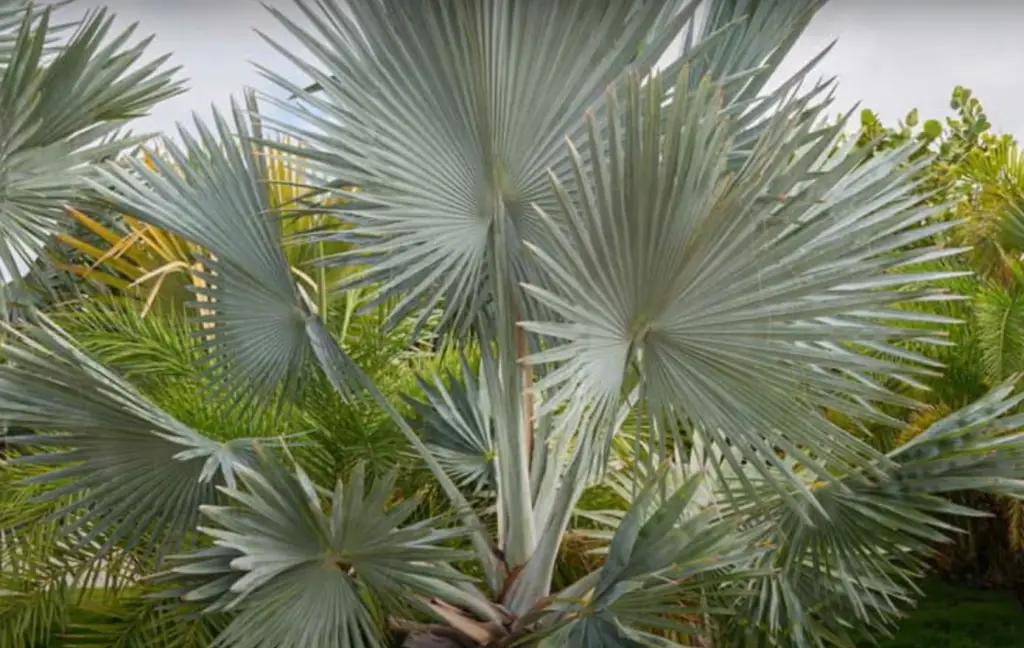
So get out there and start caring for those palms.
- Water: Palm trees need a steady supply of moisture to stay healthy and lush. Water thoroughly during the summer months when temperatures are warmest, and reduce watering in the fall and winter months when temperatures are cooler. Aim to keep the soil moist but not waterlogged at all times.
- Fertilize: Fertilizing your palm trees periodically will help them thrive and provide necessary nutrients for optimal health. Use a balanced fertilizer every 3-4 months throughout spring and summer, avoiding periods of heat or drought. Follow the instructions on the fertilizer package for appropriate application amounts and frequency for your specific type of palm tree species.
- Prune: Trimming away dead or damaged fronds is essential for good palm tree health. Prune your palms regularly to maintain a balanced shape and remove any yellowing or browning fronds that may be detracting from the trees’ overall appearance. Make sure to use sharp pruning tools, as blunt tools can damage the trunks of the palms.
- Protect: Winter weather can be hard on palm trees, so it’s important to provide proper protection when necessary. If temperatures reach below freezing for extended periods of time, wrap the trunk and lower foliage with burlap or plastic sheeting to help keep the bark and leaves warm. This protective wrapping should be removed once temperatures rise back up in springtime.
- Monitor: Finally, monitoring your palms for signs of disease or pest infestations is important to maintain their health. Common problems include palm webbing, scale, and bud rot which can all be treated with specific fungicides or pesticides. Be sure to follow the instructions on the product packages when applying any products to your palms. [9]
Do Palm Trees Become Diseased and How to Fertilize Them?
Palm trees can be vulnerable to disease like any other type of tree, but they are usually more resilient. Common diseases that may affect palm trees include leaf spot, sooty mold, phytophthora root rot and bud rot. Many of these conditions are caused by overwatering or waterlogging of the soil in which the tree is planted. To help prevent these issues, ensure your palm tree is planted in well-draining soil and avoid over-watering it. Additionally, fertilizing your palm tree regularly can also help prevent disease from occurring since healthy plants better resist attack from pathogens and pests.
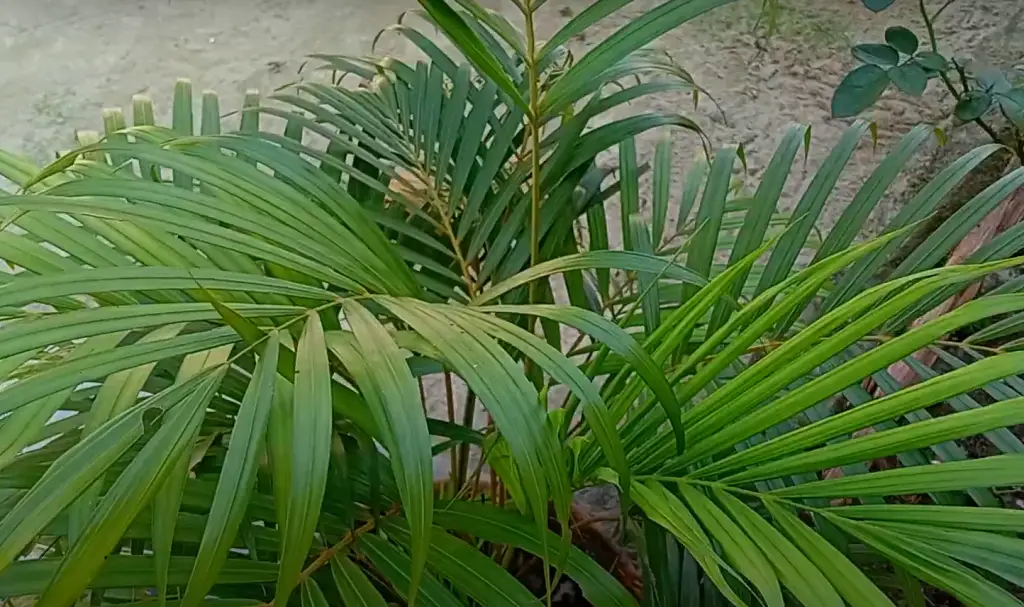
Fertilizing a palm tree should be done during its active growing season (usually spring to mid-summer). Look for fertilizer specifically formulated for palm trees or those labeled as “palm food,” which will contain a combination of macronutrients such as nitrogen, potassium and phosphorus. Additionally, it should also include micronutrients like iron, manganese and magnesium that are essential to the health and growth of your palm tree. When applying fertilizer, evenly spread the granules throughout the root zone (the area below the canopy and up to 3 feet away from the trunk) while avoiding direct contact with the trunk. This should be done every 2-4 months during the active growing season at half strength recommended on product labels. Always water in pellets after application to help them break down into soil more efficiently.
By properly caring for your palm tree, you can help prevent disease and promote healthy growth. Additionally, regular monitoring of the tree throughout its growing season will also allow you to catch any potential issues before they become too severe. Taking these steps can ensure your palm tree remains strong and vibrant for years to come. [10]
FAQs
Are palmetto and palm trees the same?
No, palmetto is a type of palm tree. Palmetto trees are small fan palms that have broad leaves and grow up to 15 feet tall. They are native to the southeastern United States and can be found in coastal areas from North Carolina to Florida. Palmetto trees are often used as ornamental plants due to their interesting shape and size. They also provide shade and serve as windbreaks for homes near beaches or other waterfront properties.
What is another name for a palmetto tree?
The palmetto tree is also known as the cabbage palm, sabal palm or sabal palmetto. The tree has an unmistakable look to it that makes it easily recognizable, with its trunk having a thicker base which tapers off at the top and large fronds sprouting out from it.
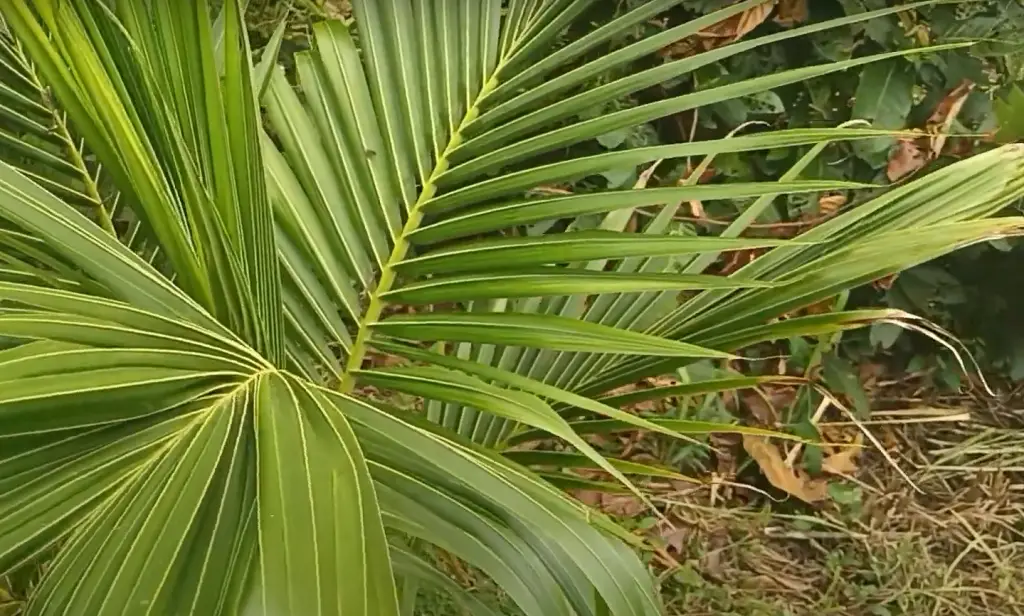
Palmetto trees are often planted in landscaping for their attractive appearance and hardy nature. They are also popularly used for making traditional crafts such as baskets, fans, hats, and more. Additionally, they provide food sources for wildlife like deer, wild turkey, raccoons, and other animals. The palmetto tree is a well-known symbol of the southern United States and can be seen adorning state flags, license plates, and even in sports team logos. It’s truly an iconic tree that has become beloved by many.
Is saw palmetto a palm?
No, saw palmetto is not a palm. It is an evergreen shrub that grows in the southeastern United States and belongs to the Serenoa genus of plants. Saw palmetto is known for its large, fan-shaped leaflets and its red berries which can be used as a dietary supplement. The extracts from these berries have been studied for their potential health benefits including reducing symptoms of enlarged prostate. However, there is no scientific evidence to back up these claims and more research is needed before any conclusions can be made.
What is the difference between a saw palmetto and a cabbage palm?
A saw palmetto (Serenoa repens) is a small, shrubby tree. It has fan-shaped leaves and produces berries that are an important source of food for wildlife.The foliage of the saw palmetto is often used in landscaping as it is attractive and drought tolerant.

A cabbage palm (Sabal palmetto) is a type of tall, stately palm tree native to the same area as the saw palmetto. It has long, pinnate leaves with serrated edges and grows up to 80 feet tall in some areas. Cabbage palms produce yellow flowers and have multiple trunks that rise from a single root system. These trees are popular for landscaping and are often used in Florida as a natural windbreak. The main difference between a saw palmetto and a cabbage palm is their size. Saw palmettos are much smaller than cabbage palms, generally reaching heights of no more than 10 feet. Cabbage palms, on the other hand, can easily grow up to 80 feet tall. Additionally, saw palmettos have fan-shaped leaves while cabbage palms have long, pinnate leaves with serrated edges. Both trees produce yellow flowers but only the cabbage palm has multiple trunks rising from a single root system.
Useful Video: Saw Palmetto & Cabbage Palm Plant ID – Learn the Difference
Final Thoughts
Knowing the difference between a palm tree and a palmetto is important because of the way they complement different climates. Armed with this information, you can confidently grow your beautiful and healthy palm tree, no matter where you are located. Whether you have a patio or grand garden, with some care and attention, you’ll be able to enjoy a stunningly healthy plant that will last for years to come. If you’re looking for more ideas or need help along the way, don’t hesitate to reach out to experienced professionals who can give advice and share insights that will help you make this home improvement project even better. Don’t let the unfamiliarity of this tropical tree scare you off – with just a little knowledge about its growing requirements, its visually impressive stems will soon become part of your backyard paradise!
References:
- https://www.missionpalmtrees.com/what-is-a-palm-tree.html
- https://www.petalrepublic.com/what-do-palm-trees-symbolize/
- https://coldhardypalms.net/palm-trees/types/palmetto-tree/
- https://homegardennice.com/palmetto-tree-vs-palm-tree/
- https://ecocation.org/saw-palmetto-palm-tree/
- https://kidadl.com/facts/characteristics-of-a-palm-tree-everything-you-need-to-know
- https://www.bhg.com/gardening/plant-dictionary/tree/palmetto/
- https://www.homesandgardens.com/gardens/how-to-grow-a-palm-tree
- https://www.plantingtree.com/blogs/gardening/how-to-care-for-palm-trees
- https://hgic.clemson.edu/factsheet/palm-diseases-nutritional-problems/







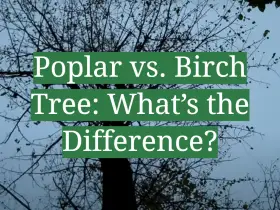

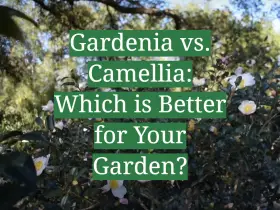
Leave a Reply
View Comments